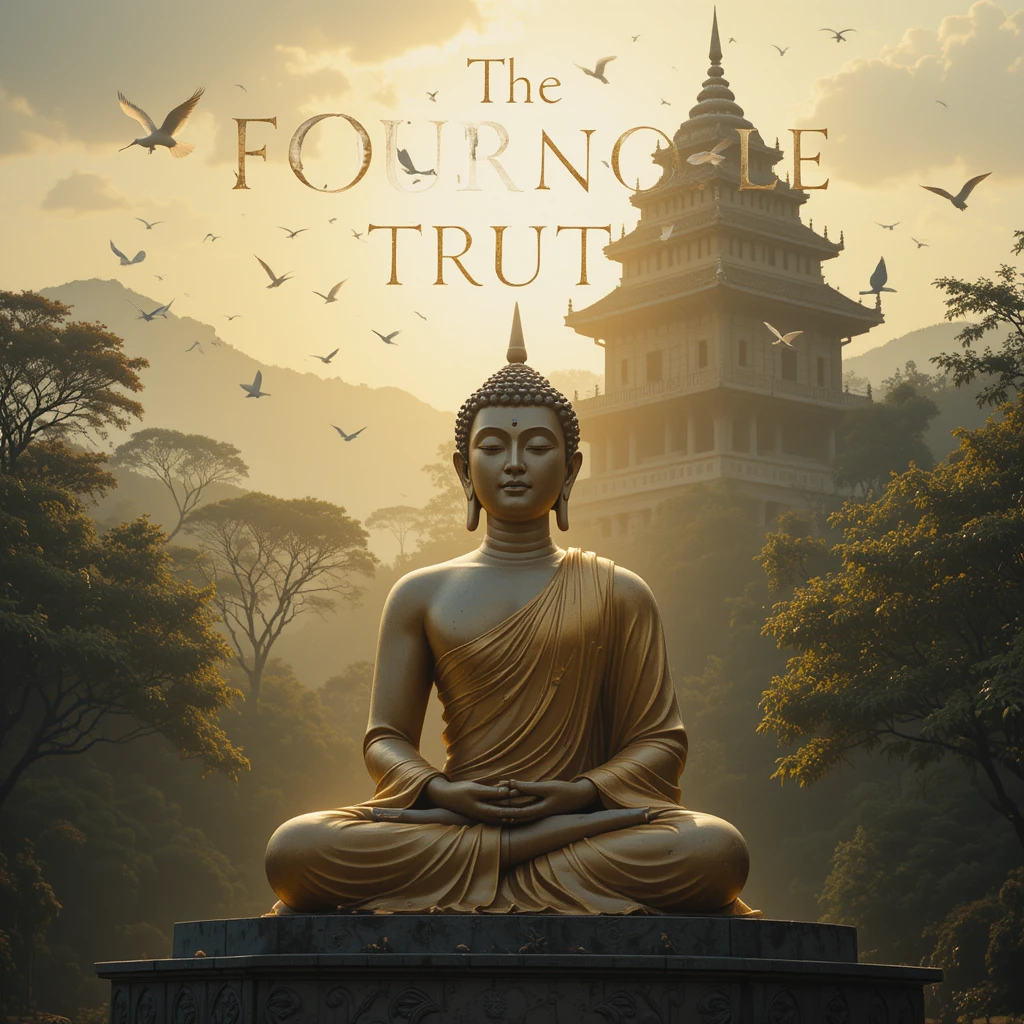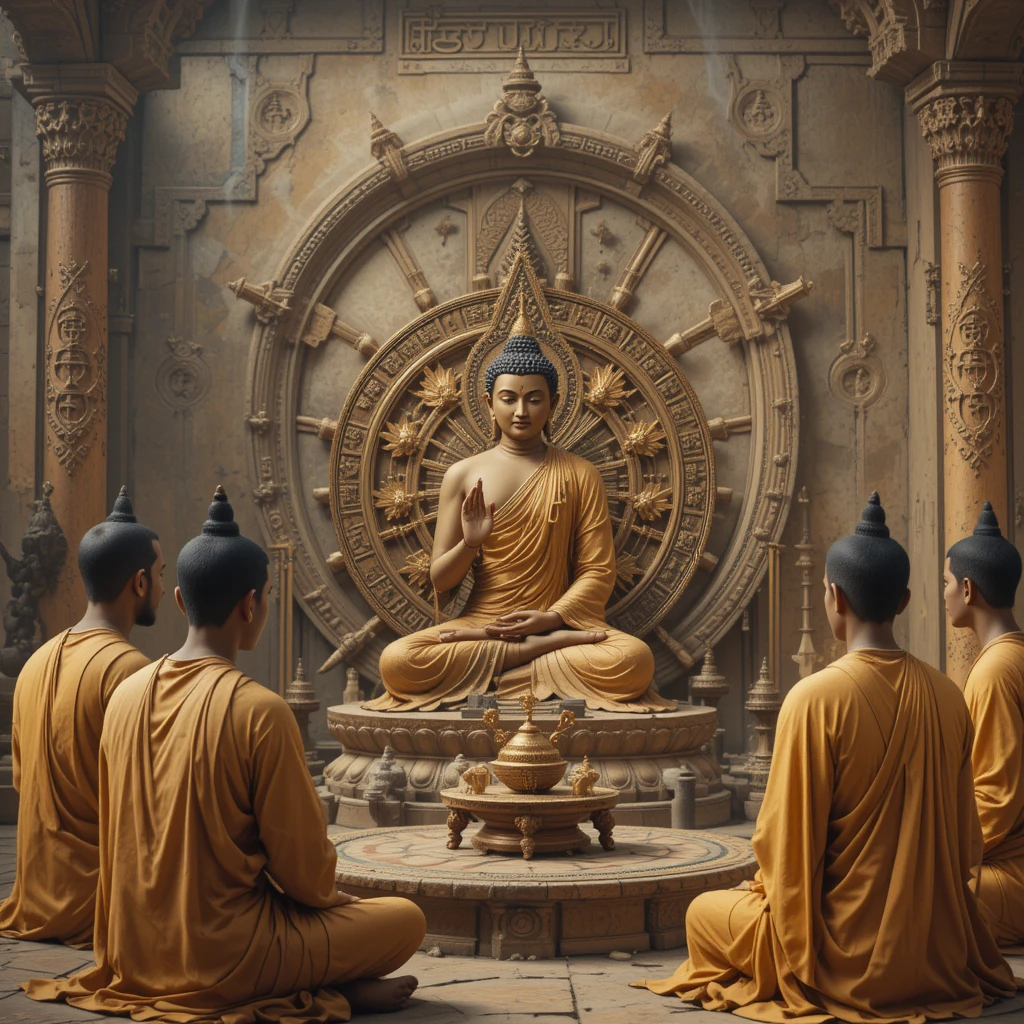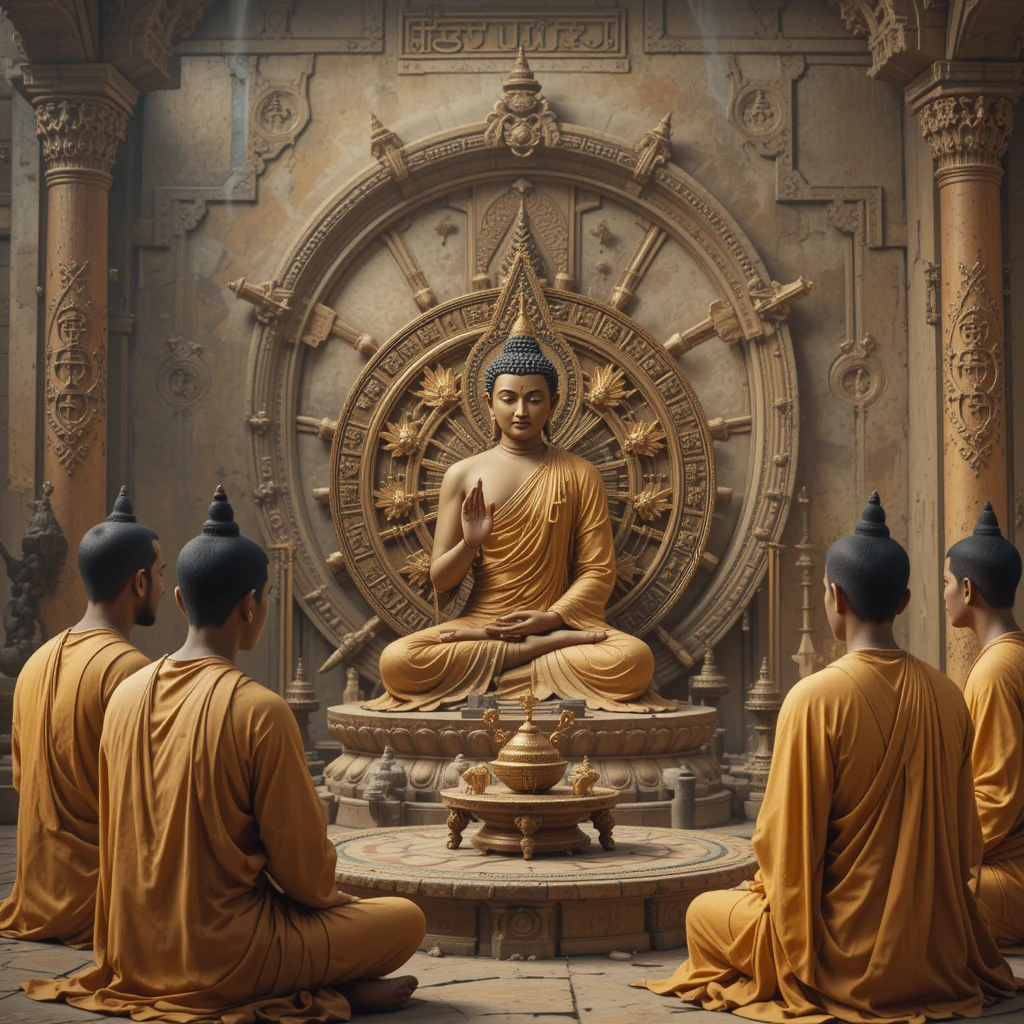Introduction to the Four Noble Truths in Buddhism
The Four Noble Truths in Buddhism are the cornerstone of the Buddha’s teachings, forming the essence of his enlightenment. Delivered in his first sermon at Sarnath, India, these truths offer a profound yet practical roadmap to address humanity’s universal struggle with suffering. In a world grappling with anxiety, materialism, and existential uncertainty, the Four Noble Truths remain as relevant today as they were 2,500 years ago.
Table of Contents
This comprehensive guide will unpack:

- The Historical Context: How the Buddha discovered the Four Noble Truths.
- The Four Noble Truths Explained: Dukkha, Samudaya, Nirodha, and Magga.
- The Eightfold Path: A step-by-step guide to ethical and mental transformation.
- Modern Applications: Using the Four Noble Truths to navigate relationships, work, and mental health.
- Debunking Myths: Clarifying misconceptions about Buddhism and suffering.
By the end, you’ll not only understand the philosophy but also learn how to integrate these truths into daily life.

Part 1: The Historical Context of the Four Noble Truths
The Buddha’s Journey to Enlightenment
Siddhartha Gautama, later known as the Buddha, was born a prince in ancient India. Shielded from suffering, he encountered the “Four Sights” (old age, sickness, death, and an ascetic) at age 29, which ignited his quest for truth. After years of extreme asceticism failed, he meditated under the Bodhi Tree, vowing not to rise until he discovered liberation.
The First Sermon: Setting the Wheel in Motion
After attaining enlightenment, the Buddha delivered his first sermon, the Dhammacakkappavattana Sutta, to five ascetics in Deer Park, Sarnath. Here, he introduced the Middle Way (rejecting extremes of indulgence and austerity) and the Four Noble Truths.
Why This Matters: The Four Noble Truths were revolutionary—they democratized spiritual liberation, making it accessible to all, not just elites.
Part 2: The Four Noble Truths Explained in Depth

1. The First Noble Truth: Dukkha (The Truth of Suffering)
What is Dukkha?
Dukkha is often translated as “suffering,” but its meaning is broader. It encapsulates:
- Physical and Emotional Pain: Illness, grief, and stress.
- Existential Discontent: The subtle dissatisfaction of chasing impermanent pleasures.
- Conditioned Existence: The inherent instability of life (anicca).

The Three Levels of Dukkha
- Dukkha-dukkha: Obvious suffering (e.g., injury, poverty).
- Viparinama-dukkha: Suffering due to change (e.g., joy fading after a promotion).
- Sankhara-dukkha: The unsatisfactoriness of clinging to a “self” in an ever-shifting world.
Example: A social media influencer experiences viparinama-dukkha when their viral post loses traction, triggering anxiety.
Why Acknowledge Suffering?
The Buddha taught that denying suffering leads to deeper bondage. Acceptance is the first step to freedom—a concept mirrored in modern therapies like ACT (Acceptance and Commitment Therapy).
2. The Second Noble Truth: Samudaya (The Cause of Suffering)
The Role of Tanha (Craving)
The Buddha identified tanha (craving) as the root of suffering. Tanha manifests in three ways:
- Kama-tanha: Craving sensory pleasures (e.g., overeating, compulsive shopping).
- Bhava-tanha: Craving existence or identity (e.g., clinging to youth, status).
- Vibhava-tanha: Craving non-existence (e.g., suicidal thoughts during despair).

The Deeper Root: Avijja (Ignorance)
Beneath craving lies avijja—ignorance of reality’s true nature. We suffer because we:
- Mistake the impermanent for permanent.
- Believe possessions or achievements will bring lasting happiness.
- Cling to the illusion of a fixed “self.”
Modern Parallel: A workaholic chases promotions (bhava-tanha), believing success will fulfill them, only to face burnout.
The Chain of Dependent Origination
The Buddha mapped how ignorance fuels suffering through 12 links, including craving, clinging, and rebirth. Breaking this cycle starts with understanding craving.
3. The Third Noble Truth: Nirodha (The Cessation of Suffering)
What is Nirvana?
Nirvana (Nibbana) is the cessation of craving and the end of dukkha. It’s not a place but a state of mind:
- Freedom from Reactivity: No longer being controlled by desires or aversions.
- Unshakable Peace: A deep contentment independent of external conditions.
Misconceptions: Nirvana isn’t nihilism or “blissing out.” The Buddha called it “the highest happiness” (Dhp 203).

How to Realize Nirodha
- Insight Meditation (Vipassana): Observing the impermanent nature of thoughts and sensations.
- Letting Go: Practicing non-attachment to outcomes, opinions, and identities.
Practice Example: When anger arises, instead of reacting, pause and ask: “Is this feeling permanent? Does it define me?”
4. The Fourth Noble Truth: Magga (The Path to Liberation)
The Noble Eightfold Path is the practical roadmap to end suffering. It’s divided into three pillars:
A. Wisdom (Pañña)
- Right View:
- Understanding karma, impermanence, and the Four Noble Truths.
- Rejecting dogmas (e.g., eternalism or nihilism).
- Right Intention:
- Cultivating compassion (metta), non-harm (ahimsa), and renunciation.

Action Step: Start a journal to reflect on how your beliefs shape your actions.
B. Ethical Conduct (Sila)
- Right Speech:
- Avoid lying, gossip, harsh words, and divisive speech.
- Practice mindful communication (e.g., THINK: Is it True, Helpful, Inspiring, Necessary, Kind?).
- Right Action:
- Follow the Five Precepts: Avoid killing, stealing, sexual misconduct, lying, and intoxication.
- Right Livelihood:
- Choose careers that don’t harm others (e.g., avoid weapons trade or exploitative industries).
Case Study: A teacher practicing Right Livelihood fosters inclusivity rather than competition.
C. Mental Discipline (Samadhi)
- Right Effort:
- Prevent unwholesome states (greed, hatred) and cultivate wholesome ones (generosity, patience).
- Right Mindfulness:
- Practice the Four Foundations of Mindfulness (body, feelings, mind, phenomena).
- Right Concentration:
- Develop meditative absorption (jhana) to stabilize the mind.
Meditation Tip: Use breath awareness to anchor attention and calm mental chatter.
Part 3: The Four Noble Truths in Modern Life
1. Mental Health and Mindfulness
- Dukkha: Recognize anxiety as a natural response, not a personal failure.
- Samudaya: Identify social media addiction as kama-tanha.
- Nirodha: Use mindfulness to create space between triggers and reactions.
- Magga: Apply Right Effort to replace negative self-talk with self-compassion.
Science-Backed Insight: Studies show mindfulness reduces cortisol levels by 20% (Source: Journal of Psychosomatic Research).
2. Relationships
- Dukkha: Accept that conflicts are inevitable.
- Samudaya: Notice clinging to idealized partner expectations.
- Nirodha: Practice loving-kindness (metta) meditation to dissolve resentment.
- Magga: Use Right Speech to communicate needs without blame.
3. Environmental Crisis
- Dukkha: Climate change as collective suffering.
- Samudaya: Greed (tanha) driving overconsumption.
- Nirodha: Adopt minimalism and sustainable habits.
- Magga: Right Action through eco-friendly choices (e.g., reducing plastic use).
Part 4: Debunking Myths About the Four Noble Truths
Myth 1: “Buddhism is Pessimistic”
Reality: The Four Noble Truths are a diagnosis and cure. By acknowledging suffering, we empower ourselves to end it.
Myth 2: “Nirvana is Escapism”
Reality: Nirvana isn’t withdrawal from life—it’s engaging with the world from a place of wisdom and compassion.
Myth 3: “You Must Renounce Everything”
Reality: Laypeople can practice the Eightfold Path while maintaining households. Renunciation refers to mental detachment, not physical austerity.
FAQs About the Four Noble Truths
Q1: Can the Four Noble Truths help with depression?
Yes. By reframing suffering as a solvable condition (not a life sentence), they instill hope. Mindfulness-based therapies (MBCT) are rooted in these principles.
Q2: Are the Four Noble Truths a Religious Doctrine?
They’re a psychological framework applicable to all, regardless of belief.
Q3: How do the Four Noble Truths relate to Karma?
Karma explains how craving perpetuates cycles of suffering, while the Eightfold Path creates positive karma for liberation.
Conclusion: Living the Four Noble Truths
The Four Noble Truths in Buddhism are not passive philosophy—they’re a call to action. By embracing suffering as a teacher, dismantling craving, and walking the Eightfold Path, we unlock lasting peace. Start small:
- Daily Practice: Spend 5 minutes observing your cravings without judgment.
- Community: Join a meditation group to stay motivated.
- Study: Read the Dhammacakkappavattana Sutta for deeper insight.
Final Thought: As the Buddha said, “You are the heir to your actions.” The power to end suffering lies within you.




